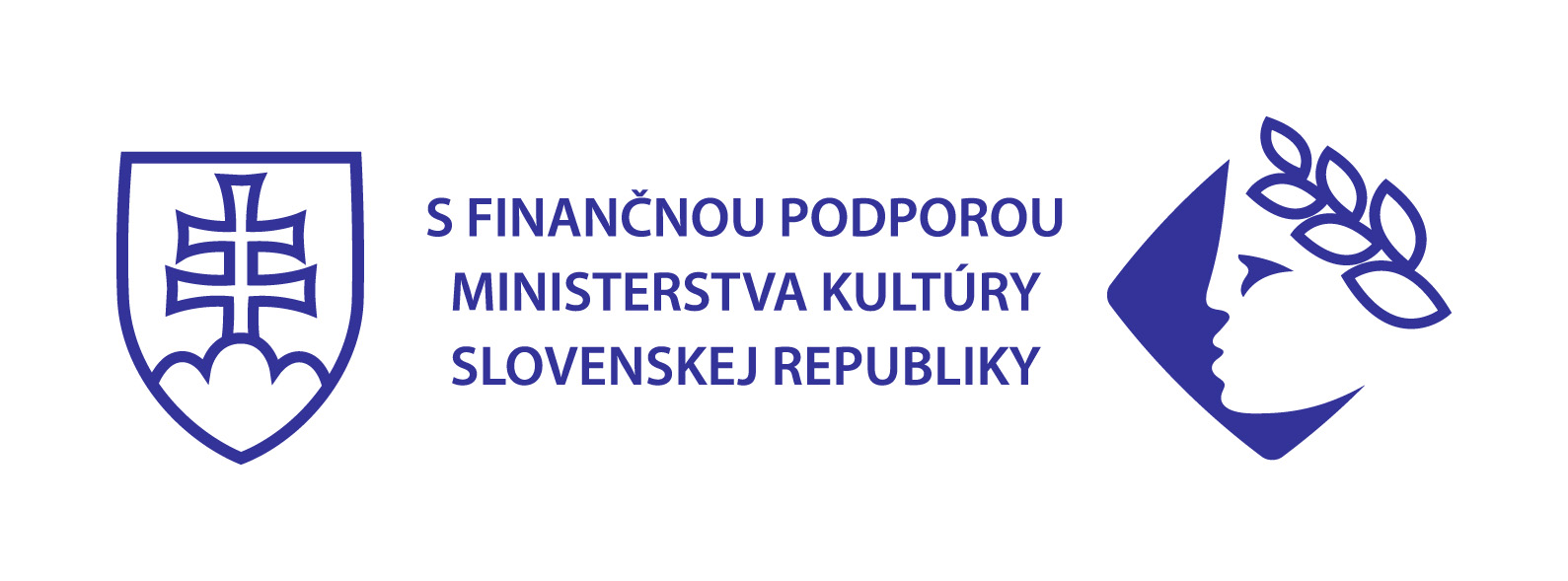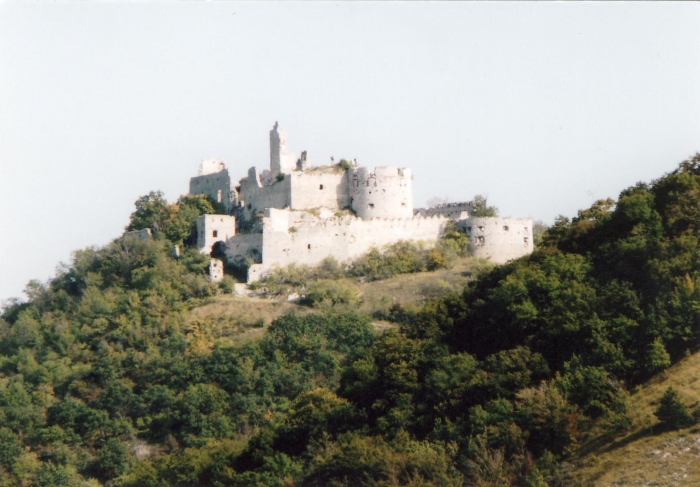Plavecký Castle 
More about Castle
If ever you visit ZĂĄhorskĂĄ lowland, surely you will be astonished by far away visible walls and towers of the PlaveckĂ˝ Castle that whiten in the middle of intense green Small Carpathian forests. The tradition of fortifications on the site of today's castle ruins is dated back into the far past.
An old fort had been built on the neighbouring dominant hill almost three thousand years ago. The same location had been chosen by Celts in order to build their fortification during turn of the century. Their massive ramparts still surround the sprawling top of PohanskĂĄ hillock in the immediate vicinity of the medieval castle.
After the establishment of the Hungarian Kingdom, a wide strip of ZĂĄhorskĂĄ lowland along with the Small Carpathian Mountains became an important border zone, in which only lived guard tribes. Since the beginning of the 13th century, however, there was a gradual settlement of the border, and by mid-century village guards were replaced by the stone castles. During this period, Detrich, son of Bratislava mayor Kunta, built their fortified residence on a rocky ridge above the plain, which also served as a border fortress to protect the kingdom. New castle was called by his name â Detrich´s stone.
The fort consisted of rampart, defining the rectangular area at the top rock and slim rectangular tower on the highest promontory. Thanks to its location in the sensitive border area, the castle was already shortly after its creation witness of fights between Hungarian and Czech troops. Later, during the 14th century, it probably belonged to the large empire of Matúť ĂĂĄk, and after his death, it was until the end of the century in administration of royal castellans.
The administrators expanded the modest residential parts by building massive towers, situated in front of the castle, which also strengthened the gateway defence. At the end of 14th century PlaveckĂ˝ Castle was listed on the extensive list of possessions of Stibor from Stiborice, Emperor Sigismund´s favourite man, and after his death and the extinction of his family the castle was gained by other prominent nobles â Counts from Jur and Pezinok. Those built a palace on PlaveckĂ˝ Castle on the northern edge of the rocks and the original castle surrounded the outer ring of fortifications. Over the 16th century the castle changed its owners several times. Important episode in the history of the owners were wealthy Fugger, who probably added massive cannon towers with loopholes and venting system along the lines of Ăervený kameò.
After the Fugger, family of Bakiè took over the empire and the last chapter of its life the castle experienced in the hands of an aristocratic Palffy family. Their work is the completion of economic and domestic buildings and fortifications gain further lower castle cannon bastion. During the uprising of Francis II RĂĄkoci in 1705 â 1706, the castle had been fought about for the last time, but events of the war had damaged it in such extent that it became uninhabitable. Over the 18th and 19th century, as time was going by, the characteristic silhouette of the ruins with a pair of dominating remains of square tower and massive cannon bastions that connect together perfectly preserved fortification walls was formed.
Unfortunately the process of destruction of the castle was not stopped even in the 20th century. During its first half almost the entire residential tower gradually broke down and, in the '90s, a substantial part of one of the ruin landmarks collapsed into the courtyard â the eastern castle tower, located at the top of the rock. Constantly advancing process of disintegration is now reminded by critical failure of the last standing wall of the castle palace and castle gate.
During centuries of dilapidation and lack of interest, activities targeted at its rescue were finally performed at the castle. 91th Scout Team of Bratislava took over ruins within the project âOdklĂnanie hradovâ. Young volunteers focus mainly on cleaning unwanted green from the castle area, which dangerously undermines the masonry. Removal of unwanted vegetation is the first and necessary step on the long road to rescue the PlaveckĂ˝ castle.

But as you certainly noticed, recently more and more experts have begun to work actively to prepare the documentation necessary to carry out the substantial works to save the castle. This could happen thanks to a grant that our community received in 2012 from the funds of the Ministry of Culture, Programme: Monuments, sub 1.1 Restoration of Cultural heritages with focus on facts national cultural heritage and processing of architectural and historical research. On the basis of these documents a static report will be drawn up to highlight which parts of the castle are most vulnerable. But that is about the future, about more money and about more performed work. However, the first success in obtaining a grant of the Ministry of Culture has given us hope that we can manage to get funding for further steps to prevent the silhouette of the ruins to disappear forever from the picturesque Carpathian ridge.
More good news is following - the village was also successful in 2013 and received grant from the Ministry of Culture, Programme: Monuments, sub 1.1 Restoration of cultural heritage to support other activities aimed at saving the castle. This year, it is still in process, the design of static security and project documentation to modify the access road. In cooperation with the PLA MalĂŠ Karpaty, we will begin clearance work that is crucial for the implementation of masonry planned for this year. On this basis, we expect the gradual implementation of construction works - immured in caverns masonry accessible without scaffolding.
I would also like to inform you that a sponsor was found - Prince Pascal G.F.V. Ergo, who contributed an amount of ⏠2,000 for the reconstruction of the castle (the contract is published in the section of the contract). This way I would like to thank him again and I secretly hope that we will find more people like him. Our castle certainly deserves it.


